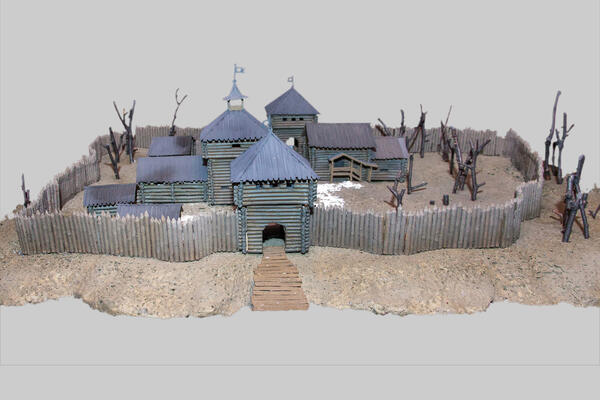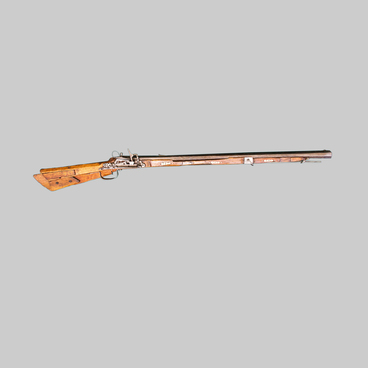There were a significant number of different types of fortified settlements - ostrogs, slobodas, winter quarters, by the beginning of the 18th century in Siberia. They performed the functions of military and administrative centers. Here they collected tribute paid off in furs — yasak from the local population and found protection from enemy attacks by local aborigines. Most often, in the taiga Siberian wilderness, small ostrogs were built for these purposes, in which relatively small garrisons were constantly located. The remains of abandoned military settlements lost in the depths of the taiga, in some cases, have been preserved to our time.
One of these rare examples of preserved Russian ostrogs in Siberia is the Kazymsky ostrog, the model of which is presented in the Museum exposition. The first mention of it dates back to 1607. The sources of the 18th century confirm the existence of an ostrog on the Kazym river (on the territory of the modern Khanty-Mansi Autonomous District).
For the first time, the officer Shershenevich briefly described and measured the two towers, who visited the ruins of the Kazymsky ostrog in the winter of 1843. And already a very detailed description appeared at the end of the 19th century in the ‘Memorial book for the Tobolsk province for 1884’. At the beginning of the next century, Alexander Dunin-Gorkavich, a well-known researcher of Siberia, reported some new data about various buildings of the ostrog on Kazym.
In 1969-1974, archaeologists and architects of the Institute of Archeology and Ethnography of the Siberian Branch of the Russian Academy of Sciences examined the ostrog, after which the remains of the structures were taken to Novosibirsk. Today, the towers are located on the territory of the open-air Historical and Architectural Museum of the Institute of Archeology and Ethnography of the Siberian Branch of the Russian Academy of Sciences.
The shape of the Kazymsky ostrog resembled a trapezium. The walls were made of tightly fitted and sharpened on top logs with a diameter of 14-15 centimeters, they rose up to a height of more than three meters. This wall is called fenced. In the South and North walls, there were two towers with gates, the doors of which were arranged only on the outside of the towers. There were government barns and a residential tower-barracks inside the walls.
One of these rare examples of preserved Russian ostrogs in Siberia is the Kazymsky ostrog, the model of which is presented in the Museum exposition. The first mention of it dates back to 1607. The sources of the 18th century confirm the existence of an ostrog on the Kazym river (on the territory of the modern Khanty-Mansi Autonomous District).
For the first time, the officer Shershenevich briefly described and measured the two towers, who visited the ruins of the Kazymsky ostrog in the winter of 1843. And already a very detailed description appeared at the end of the 19th century in the ‘Memorial book for the Tobolsk province for 1884’. At the beginning of the next century, Alexander Dunin-Gorkavich, a well-known researcher of Siberia, reported some new data about various buildings of the ostrog on Kazym.
In 1969-1974, archaeologists and architects of the Institute of Archeology and Ethnography of the Siberian Branch of the Russian Academy of Sciences examined the ostrog, after which the remains of the structures were taken to Novosibirsk. Today, the towers are located on the territory of the open-air Historical and Architectural Museum of the Institute of Archeology and Ethnography of the Siberian Branch of the Russian Academy of Sciences.
The shape of the Kazymsky ostrog resembled a trapezium. The walls were made of tightly fitted and sharpened on top logs with a diameter of 14-15 centimeters, they rose up to a height of more than three meters. This wall is called fenced. In the South and North walls, there were two towers with gates, the doors of which were arranged only on the outside of the towers. There were government barns and a residential tower-barracks inside the walls.



